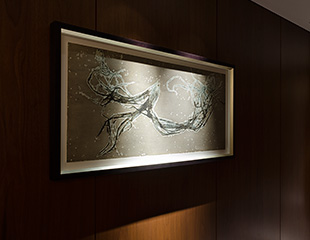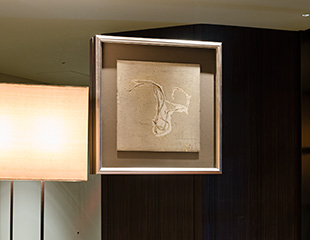井出 創太郎

- 作品名:
- piacer d’amor bush
- サイズ:
- 各w1000×h400mm
- 技法・素材:
- 絵画/版画
- エリア:
- パークスイート
タイトルの『piacer d’amor bush』(ピアチェール・ダモーレ・ブッシュ)はイタリア語と英語の造語です。「piacer d’amor(愛の喜び)」は幼い頃いつも傍らにあったイタリアの古典歌曲(民謡)で、個人的に大切な記憶であるとともに、「記憶(=想起という今)」を象徴するものとなっています。「bush(叢)」は、植物が芽生へ、茂り、枯れていく、流れ行く時間と繰り返し、めぐりゆく時間を表すものとして、作品に寄り添わせています。時間、記憶は私のモチーフで在り続けています。
- Title:
- piacer d’amor bush
- Size:
- Each w1000×h400mm
- Style:
- Print - Etching
- Location:
- Park Suite
“The title, piacer d’amor bush was coined from Italian and English. 'Piacer d’amor' (the joy of love) is a classic Italian folk song that I heard often at a young age. Not only is it an important personal memory, it also symbolizes my recollection of that memory today. 'Bush' is representative of the fact that in the flow of time, plants germinate, they flourish, and then they die. And then the process repeats itself. This piece lets the viewer get in close– slowly, and over time. Time and memories continue to be motifs of mine.”

- 作品名:
- 無題
- サイズ:
- w1230×h620mm
- 技法・素材:
- 絵画/版画
- エリア:
- パレススイート
- Title:
- Untitled
- Size:
- w1230×h620mm
- Style:
- Print - Etching
- Location:
- Palace Suite

- 作品名:
- 無題
- サイズ:
- w600×h600mm
- 技法・素材:
- 絵画/版画
- エリア:
- 客室フロア エレベーターホール
- Title:
- Untitled
- Size:
- w600×h600mm
- Style:
- Print - Etching
- Location:
- Guest room floor, elevator hall










